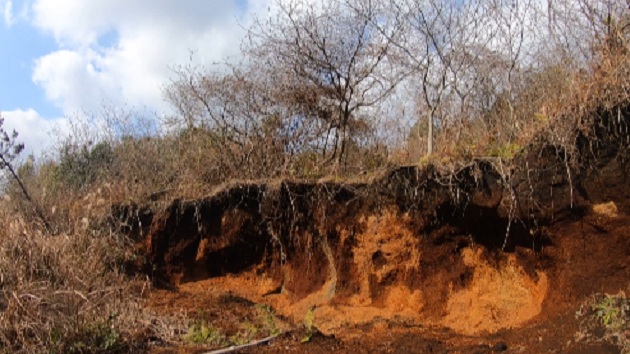
The surfaces of Jeju volcanic cones, or oreum, have been steadily and quickly eroding for a variety of reasons.
Once destroyed, it is impossible to restore.
However, scientists cannot report any data on the issue, as no research has been made on the erosion.
Todd Thacker reports.
This is (동거문이) Donggeomuni Oreum in eastern Jeju.
Its surface is cracked and broken.
Large sections of the rubberized trails are damaged or missing.
The slopes of the volcanic cone have lost soil and become cliffs.
In addition to trail degradation, oreum have eroded at a steady pace.
Once erosion starts, it can spread quickly.
Scoria and soil have been swept away as rainwater flows down along a path created by the overuse of the trail, displacing the upper layer of soil.
Climate change has recently brought torrential rain, which accelerates erosion.
INTERVIEW
Ahn Ung-san / Researcher, Jeju Province
Rainwater flows on the surface, which creates rainwater flow paths. They sometimes become deep grooves. This accelerates erosion. Once a volcanic cone erodes, the erosion spreads rapidly.
<인터뷰 : 안웅산/ 제주도세계유산본부 지질학박사>
"표면에 있는 토양을 따라 빗물이 모이고 흐르면서 자연적으로 오름에 깊은 계곡이 형성되기도 하고 물길이 형성되기도 합니다. 그러면서 크게 침식이 발생합니다. 일단 침식이 한 번 발생하면 송이들이 안전각을 이루는 단계까지 침식이 가속화 되는 겁니다."
Many of Jeju's precious oreum are wearing away.
If left untended, future generations might be unable to appreciate these beautiful volcanic silhouettes.
Todd Thacker, KCTV





